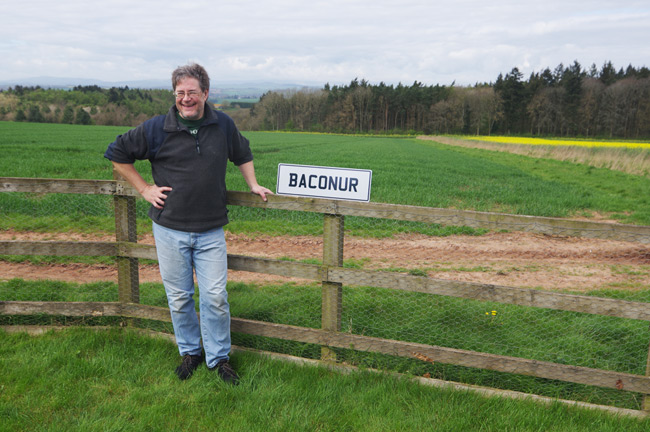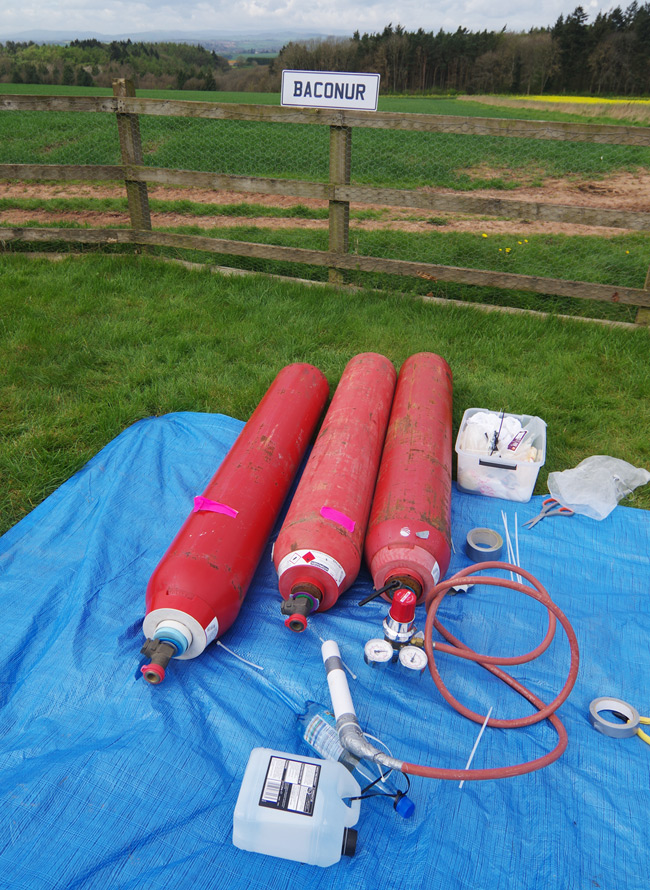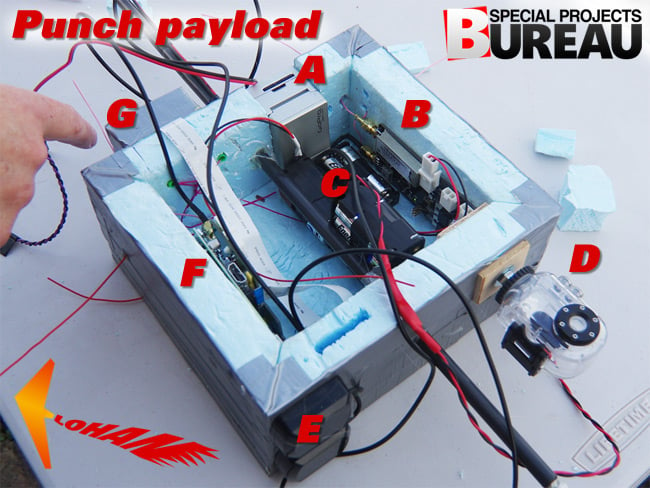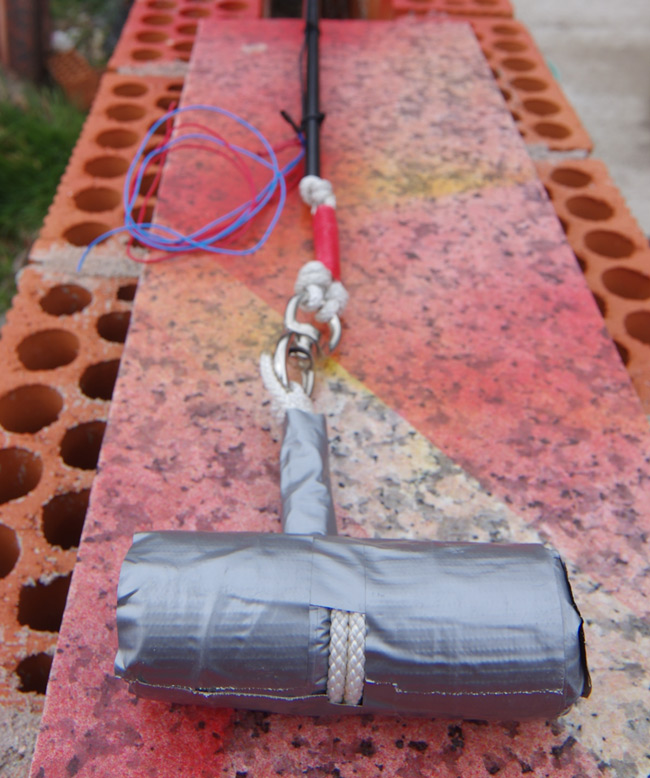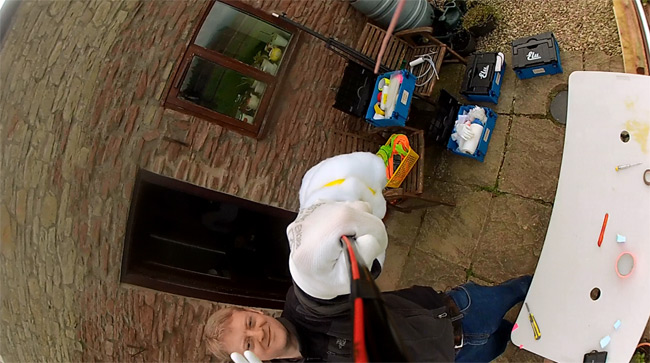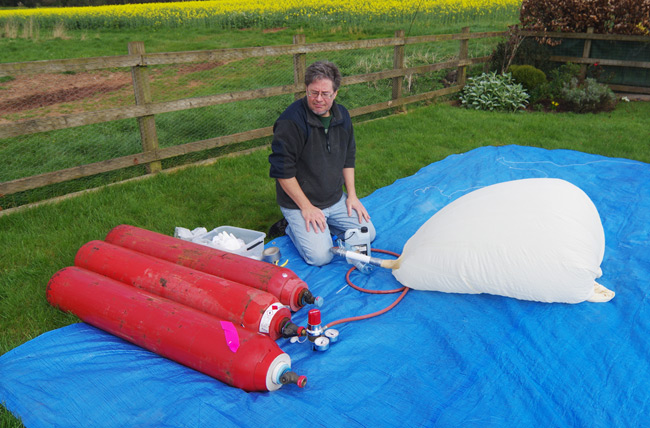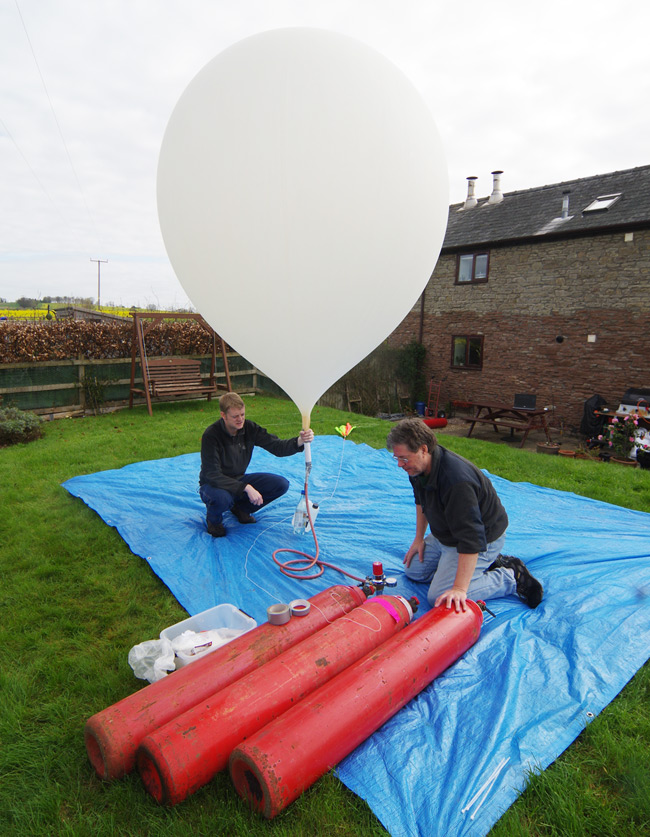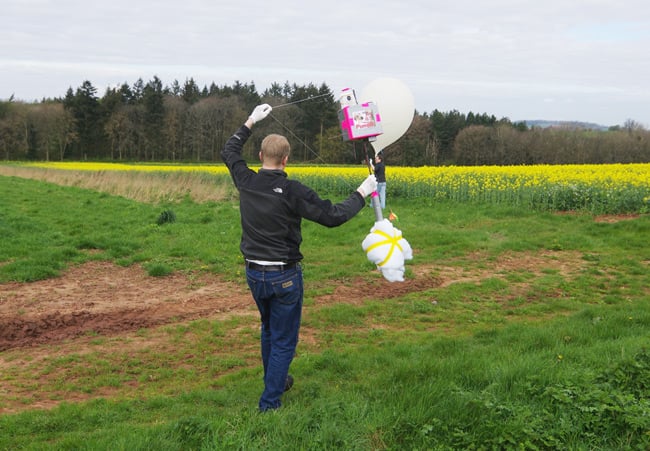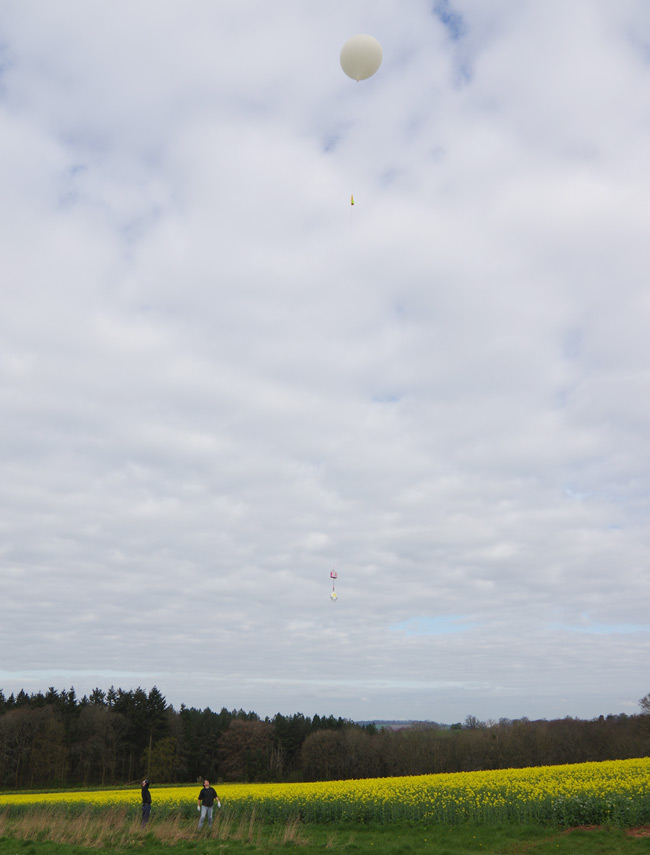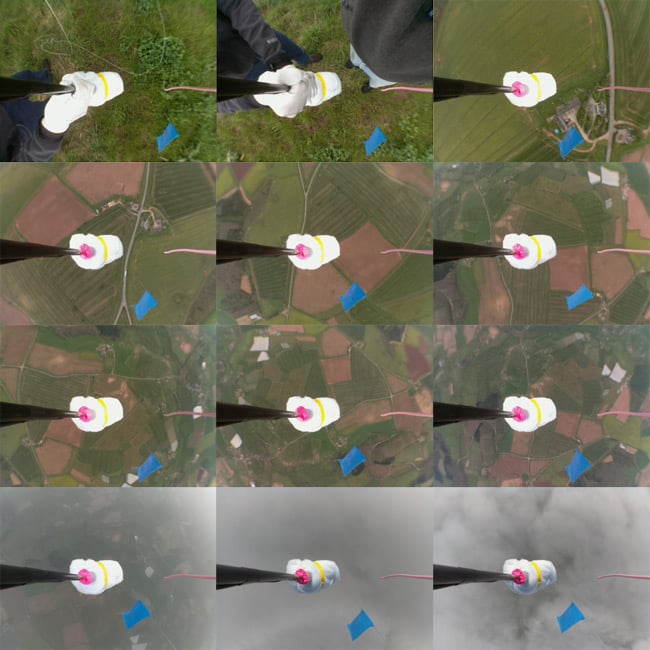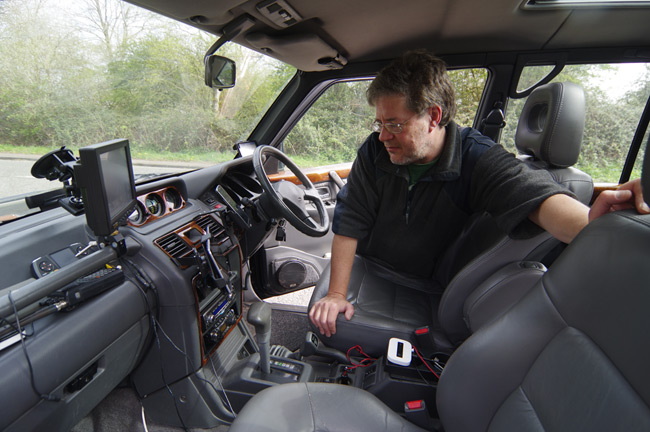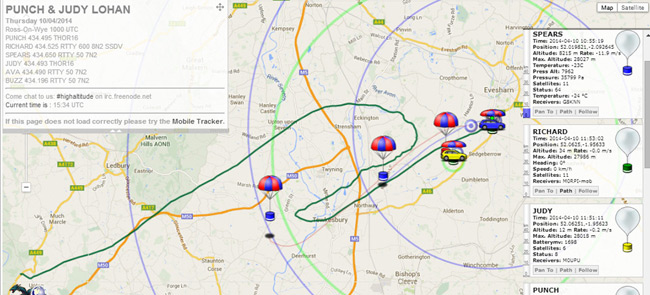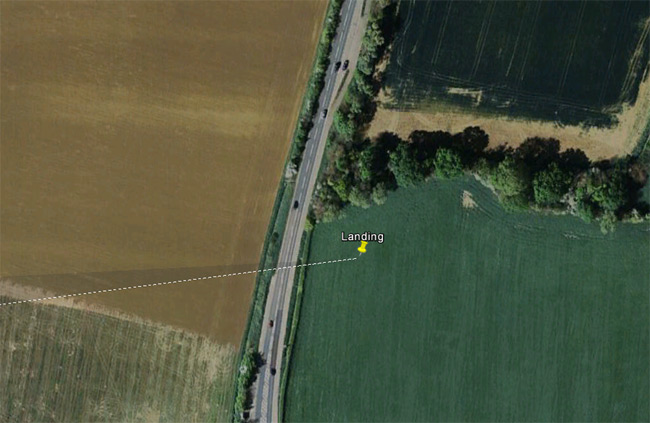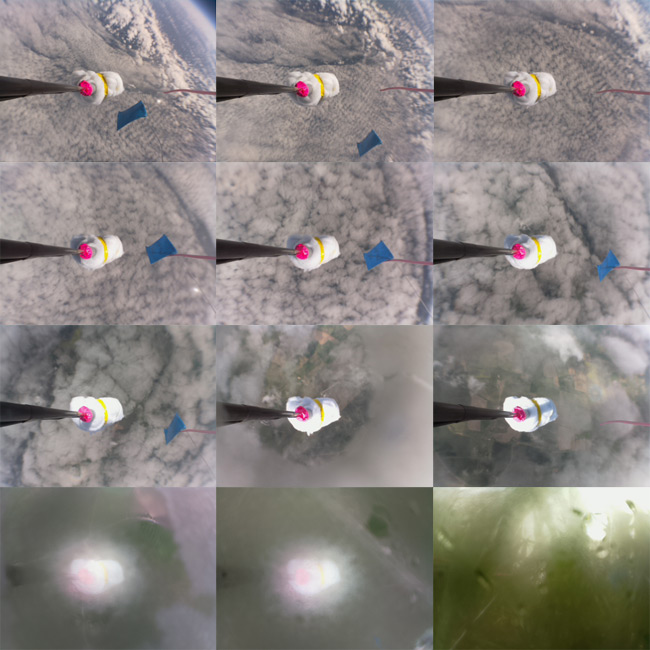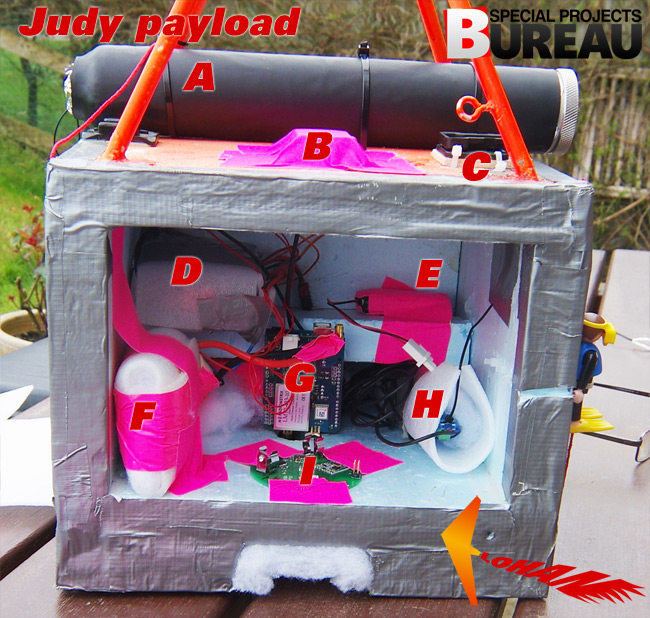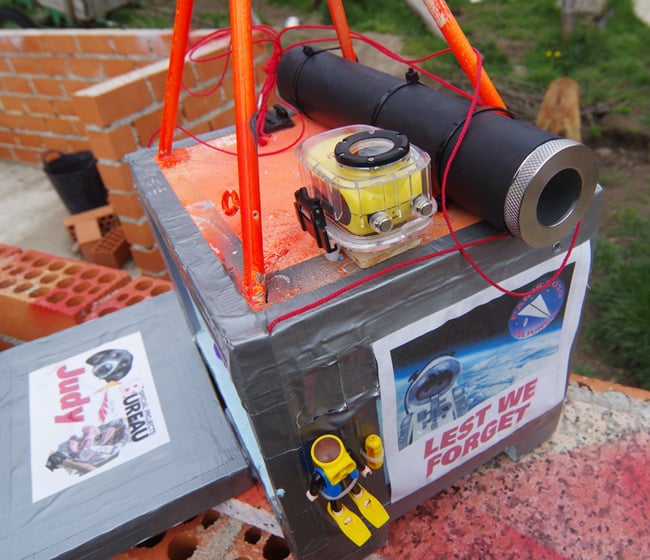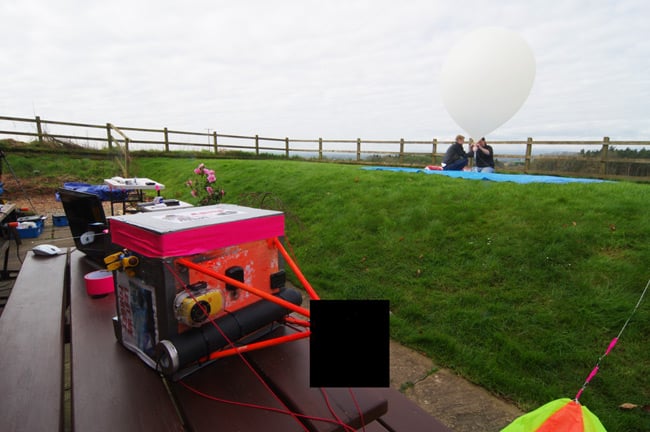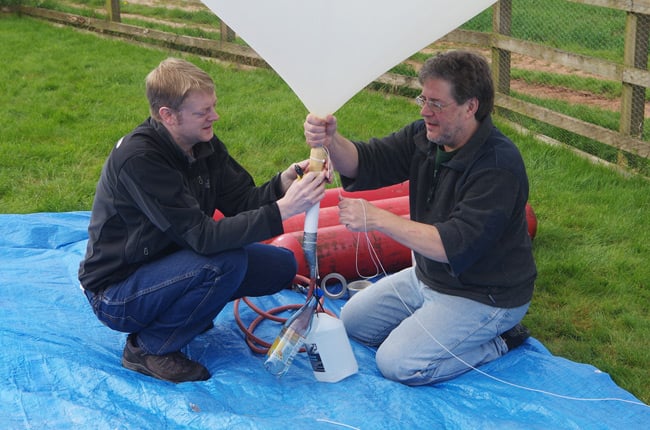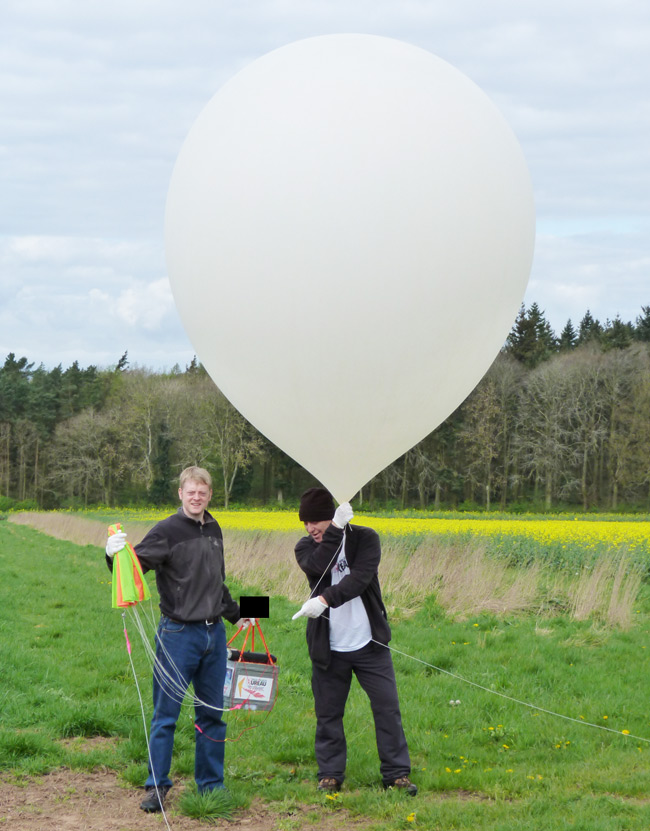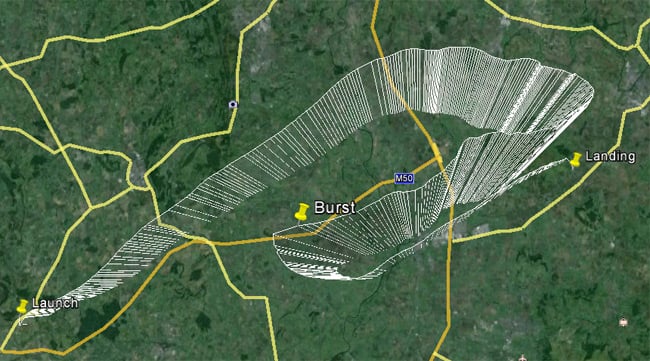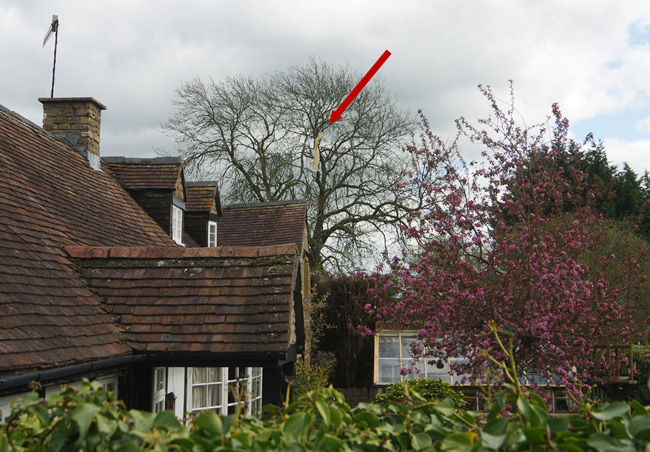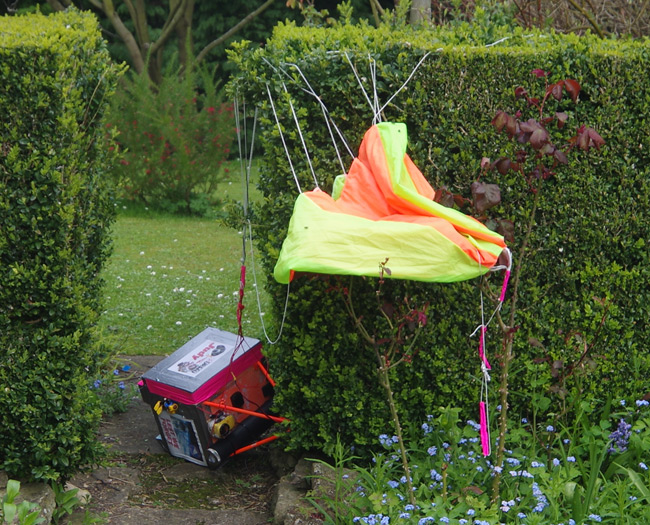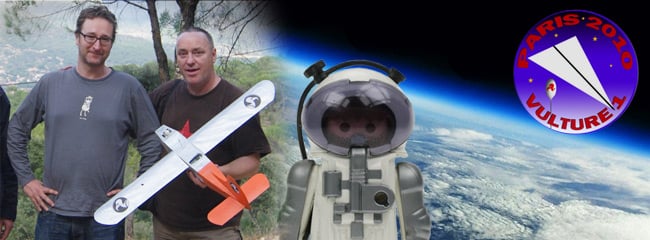Original URL: https://www.theregister.com/2014/04/16/punch_and_judy_roundup/
LOHAN's Punch and Judy show: The big fat round-up
All the action from 'Baconur' - Blighty's renamed space flight centre
Posted in Science, 16th April 2014 07:56 GMT
Pics+Vid The dust has pretty well settled on the Low Orbit Helium Assisted Navigator (LOHAN) Punch and Judy test flights, and we now present for your further entertainment a round-up of the two missions.
As you can see from the above timelapse video of the launches last Thursday, we did finally get off the ground after a cancellation on 5 April due to excessive wind.
Despite the disappointment, team members (from L-R) Paul Shackleton, Rob Eastwood, Anthony Stirk, Dave Akerman and El Reg's Drew Cullen managed to put a brave face on things...
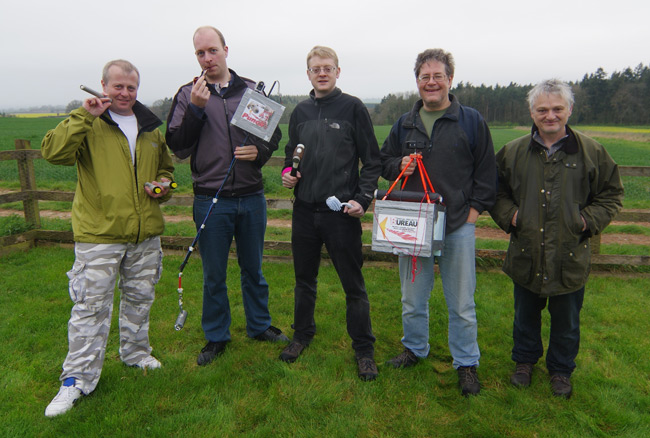
...although Paul probably won't get many bookings for his new sideline as an explosive Jimmy Savile impersonator.
For the second pop, it was left to myself, Dave Akerman and Anthony Stirk to get Punch and Judy airborne. When I joined the chaps bright and early at Blighty's Baikonur, near Ross-on-Wye in Herefordshire, I found that the site had officially been renamed "Baconur", in acknowledgement of the team's preferred pre-flight nourishment:
Good show, and it's with the delicious odour of sliced pork sizzling over a hydrogen flame that we bring you details of Punch and Judy...
Punch
The Punch flight was designed primarily designed to finally determine if we could get a ammonium perchlorate composite propellant (APCP) motor to burn in the stratosphere, using a homebrew igniter.
A couple of weeks back, we did successfully fire a small motor at extremely low temperature in the Rocketry Experimental High Altitude Barosimulator (REHAB) hypobaric chamber, so hopes were high.
On board Punch was the Special Project Electronic Altitude Release System (SPEARS) control system, designed to fire the Vulture 2 spaceplane's motor at a predetermined altitude.
Here's the packed payload, minus Anthony Stirk's PAVA tracker, which was mounted in the lid:
- GoPro 2
- Special Project Electronic Altitude Release System (SPEARS) control board
- SPEARS, igniter and Raspberry Pi battery packs
- Case for "DBcam Hi-Resolution Micro Action Sports Video Camera"
- GPS units
- Raspberry Pi and Pi in the Sky board
- Raspberry Picam enclosure
The Pi in the Sky board is a new breakout for the Pi, which connects via the GPIO. It consolidates all the peripherals of Dave's Pi in the Sky rig, including the Radiometrix NTX2 transmitter, into one handy package. We've got one for the Vulture 2, and will bring you details just as soon as it's installed.
Both the Picam and GoPro 2 were mounted facing downwards, to capture the action as our rocket motor - mounted at the end of a long carbon fibre pole - roared into life.
For a bit of protection, the motor was wrapped in a big wad of padding, as this image from the Picam shows:
And so without further ado, the moment had arrived to get Punch into the air:
Here's a quick montage of Picam images as the payload rose majestically heavenwards:
In case you're wondering, the little blue flag is the PAVA tracker name label, fixed to one of the antennas. The Picam had a wide-angle lens fitted, which isn't top quality, but gives a decent field of view to capture rocket motor blasts.
Or not, as the case may be, because a blown fuse in SPEARS scuppered the test. There will be more on the reason for that later in the week, when we'll reveal the comedy oversight behind the fail.
Having seen Punch off, and got Judy in the air (see below), it was into the pursuit vehicles and on the road as the payload drifted eastwards:
Here's the track from the Picam rig (callsign "RICHARD")...
...and there's a .kmz of the flight here.
Balloon burst came at 27,986m, and the payload came down in a field just off the A46 close to Evesham in Worcestershire:
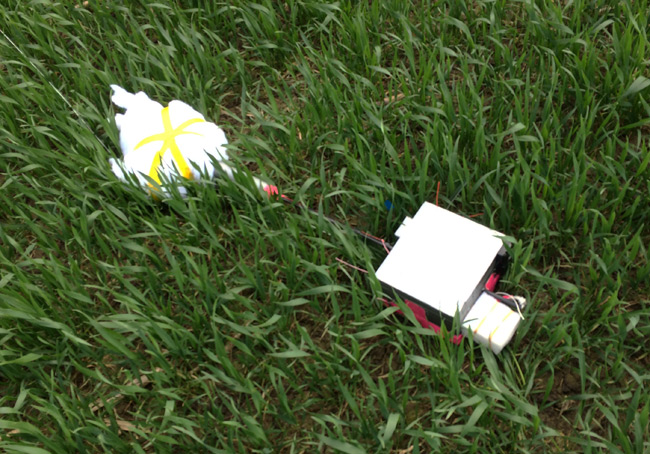
While you imagine the conversation between the rather bemused farmer who owned the field and Anthony Stirk, who quite correctly went off to get permission to recover Punch, enjoy a second Picam montage of the descent:
With Anthony tackling local landowners, myself and Dave rushed of in pursuit of...
Judy
The Judy payload was intended to test the Vulture 2's space-grade Polyimide Thermofoil flexible rocket motor heater, which will prevent the Cesaroni 54mm 3G casing from catching a nasty cold:
Initial ground testing confirmed the heater would do the job, but our concern was that it might melt down at high altitude due to the absence of air.
Accordingly, we got our hands on a 12V aquarium thermostat to prevent possible runaway temperatures, especially once the heater was sealed inside some monster heatshrink:
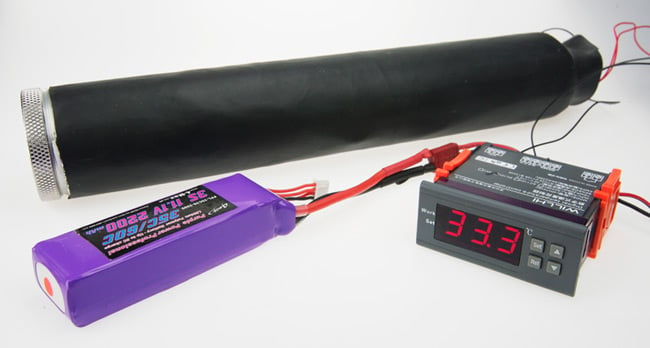
Of course, the only way to find out for sure was to get the thing up in the air, for which we present the Judy payload box:
- Cesaroni 54mm motor casing
- GPS unit
- Mount for "Electronics-Depot HD1080P" camera
- Motor heater thermostat
- Doomsday cut-down batteries
- Motor heater LiPo
- RockBLOCK/Arduino doomsday boards
- Motor temperature logger
- Back-up tracker
The temperature logger is an off-the-shelf unit, connected to a NTC thermocouple taped to the inside of the motor case.
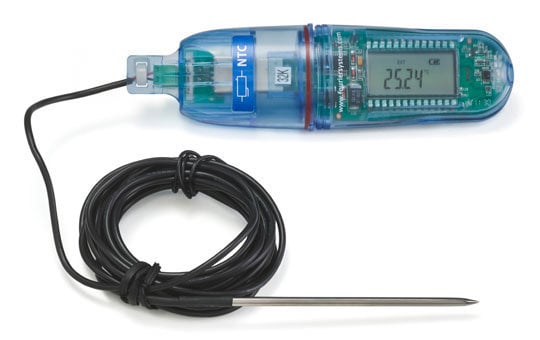
Here's an earlier snap, taken as we prepared the payload, including the budget Chinese camera, making its first flight into the chilly blue yonder:
The Frogmonaut has been a LOHAN test flight regular since the heroic Playmonaut English Channel tragedy, and we invite readers to raise a pint to both miniature team members.
The Judy mission also carried the RockBLOCK-Ardunio sandwich component of the LOHAN doomsday rig...
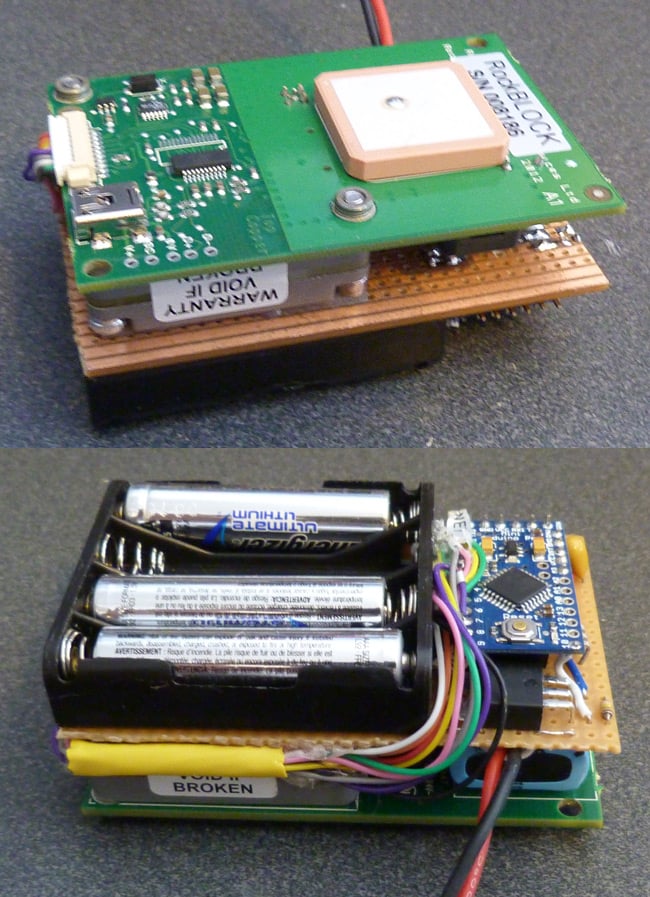
...which commands an emergency cut-down from Dave Akerman's Big Red Abort Switch To Release Aerial Payload (BRASTRAP) box:
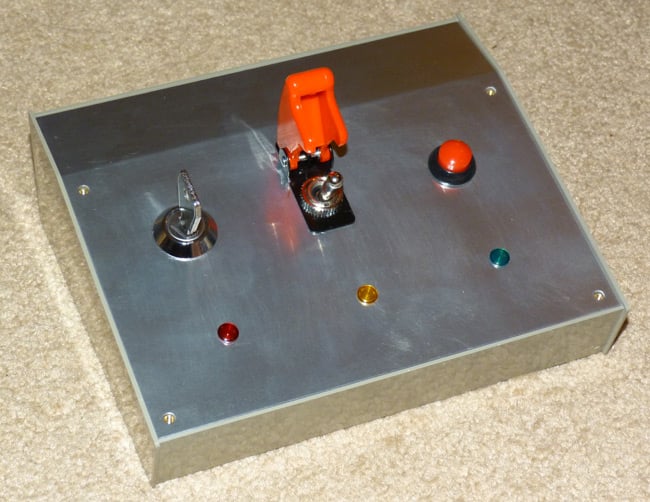
The system works by sending a text message from BRASTRAP via a wireless net connection, the RockBLOCK servers and the Iridium satellite network to the onboard sandwich, which in turn trigers an explosive cut-down via MOSFET.
We decided that since it wasn't critical for Judy to reach balloon burst altitude, we might as well give the system a real-world test following a satisfactory try-out on the ground last year. That's why the payload video camera is pointing upwards, to record the doomsday moment.
So, back to Baconur for the launch:
The redacted section of the photograph contains a classified piece of equipment we are not at present at liberty to reveal, but rest assured the required security clearance is in the post.
Yes indeed folks, I finally got to do a launch myself:
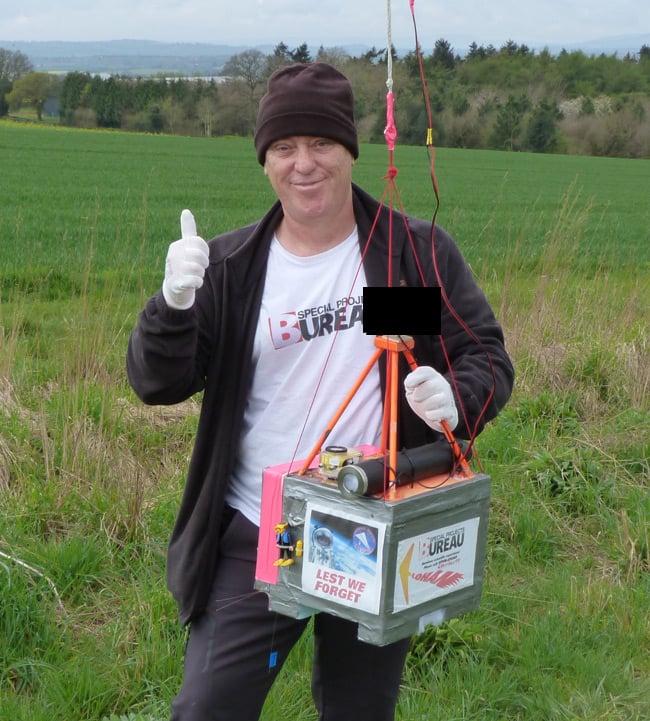
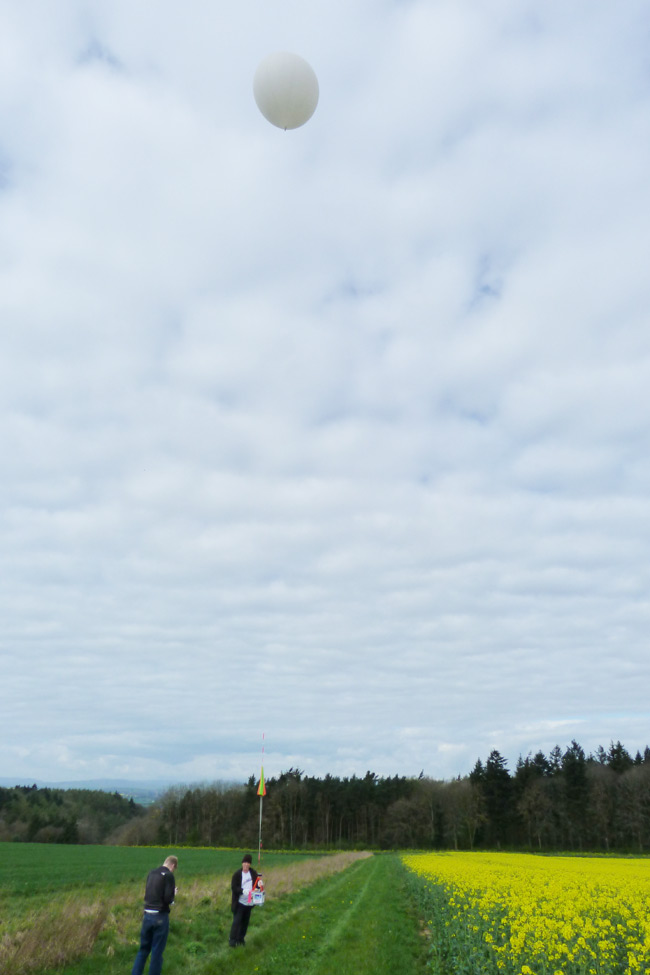
Since Judy launched not long after Punch, it drifted in the same direction, and came down just 4km from the first payload, in the village of Ashton under Hill, following balloon burst at 27,939m. Here's the track on Google Earth (.kmz here), using data from an onboard back-up tracker.
But hold on a minute, we hear you cry, what about the doomsday cut-down? Well, in a second Punch and Judy top comedy moment, when we decided to press the big red button, we didn't have a 3G connection in the pursuit vehicle.
As soon as we did, there was a problem sending the command, for reasons as yet undetermined. If the thing had worked, then Judy wouldn't have landed here...
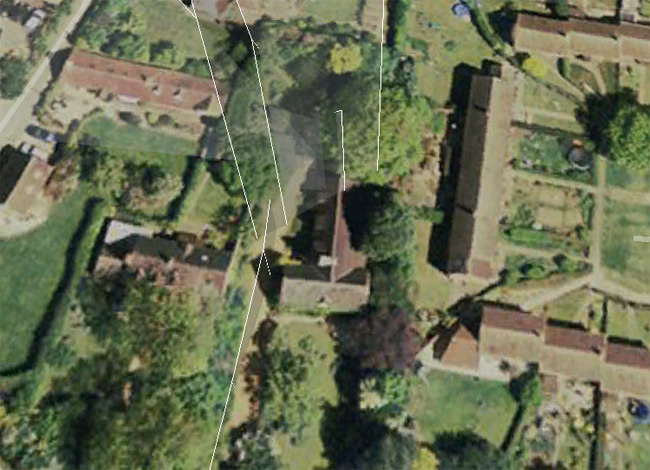
...with the balloon up a tree...
...and the payload and chute in a garden hedge:
The garden gate was open, so I went in and knocked on the front door, but no one was home. Having pulled the remains of the balloon from the tree, and made certain the landing hadn't done any damage, I left it at that.
If you take a close look at the .kmz track, you can see that the payload then made its way to the local pub, where the tracker was turned off and much-needed beer was taken.
So, in summary, here's the outcome of the various mission elements:
- SPEARS: Failed due to blown fuse
- Punch payload mini camera: Successfully recorded 1h 12 min of in-flight video
- Rocket motor heater: Worked as expected
- Doomsday rig: Failed to establish connection, then went titsup
- Judy payload video camera: Successfully recorded 40 min of video
- Classified Judy payload: Awaiting results from the supplier
As this has been a bit of an epic round-up, we're preparing separate pieces on the SPEARS and BRASTRAP issues, the budget camera results, the rocket motor heater, and of course the classified device.
As ever, it's a tip of the hat to all the LOHAN team members for their sterling efforts, even if we evidently have more work ahead resolving the last few glitches. Suffice it to say, we're planning a "Punch 2" flight asap, for a second go at the rocket motor ignition. ®
More from the lovely LOHAN:
- You can find full LOHAN coverage right here.
- If you're new to LOHAN, seek out our mission summary for enlightenment.
- There are photos our our magnificent Vulture 2 spaceplane here, and detailed structural plans here.
- For your further viewing pleasure, we have all our photographic material stored on Flickr.
- Our LOHAN and Paper Aircraft Released Into Space (PARIS) videos live on YouTube.
- We sometimes indulge in light consensual tweeting, as you can see here.
